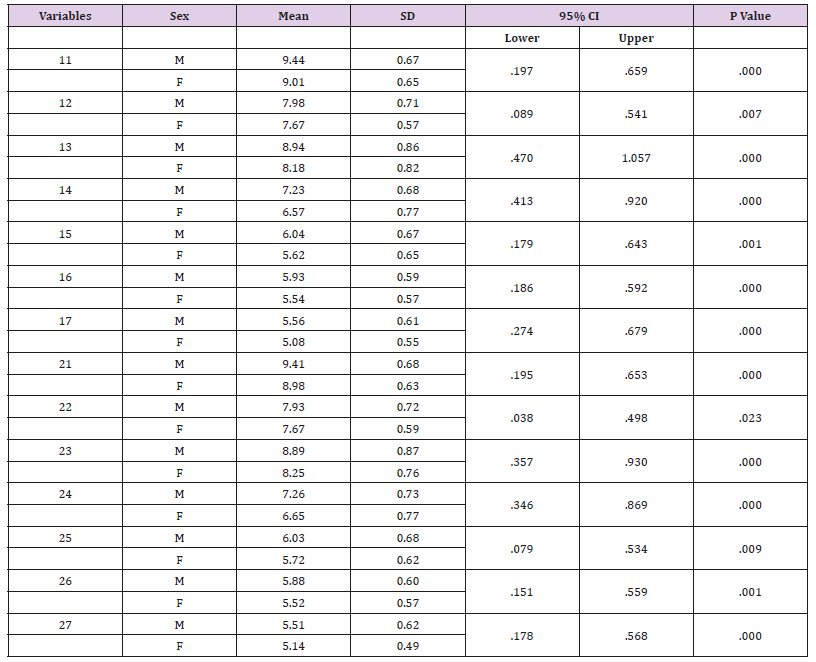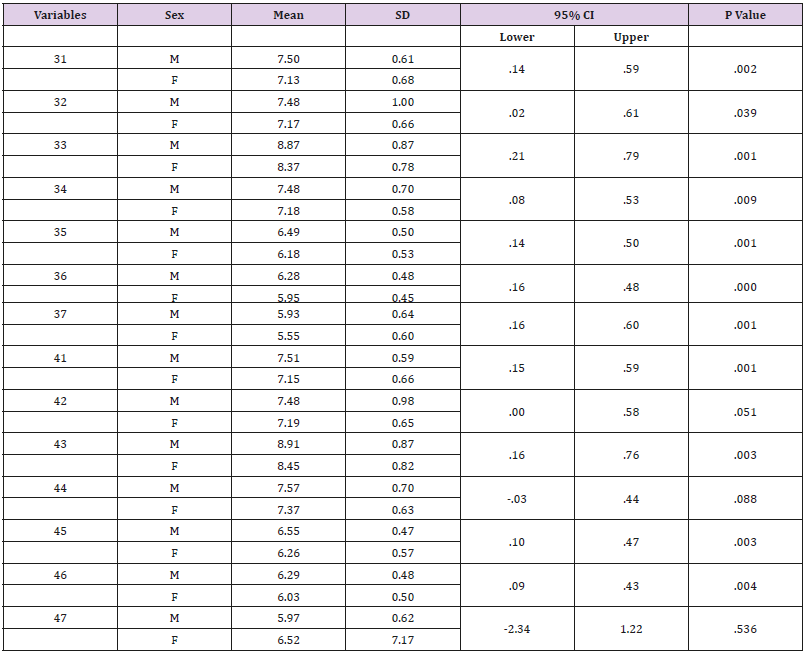Monitoring of Intestinal Nematodoses of Dogs in the Kabardino-Balkarian Republic and the Test Results of the New Drug Avertfen Powder
Introduction
In the subjects of the Russian Federation, toxocarosis, ankylostomosis, uncinariosis, toxoascariosis, etc. are the most common nematodoses and occur in dogs with an EI of 70-100%, which requires the development of new drugs for the treatment and prevention of invasions [1-15]. In young dog populations, nematodoses (toxocarosis, ankylostomosis, uncinariosis, toxoascariosis) have an epizootic manifestation with the formation of mixed invasions [1-15] The goal is to study the nosological profile of nematodoses in dogs in the Kabardino alkarian Republic and to test the effectiveness of the new drug Avertfen powder in mixed invasion of intestinal nematodoses in dogs (toxocarosis, ankylostomosis, uncinariosis and toxoascariosis).
Materials and Methods
The spread of mono- and associative invasions of intestinal nematodoses of dogs in the Kabardino-Balkarian Republic was determined in 2015-2018. For this, a complete helminthological autopsy of 50 corpses of dogs aged 5-12months was carried out according to the method of K.I.Scriabin. An experiment to test the anthelmintic activity of the drug Avertfen powder with mixed invasion of intestinal nematodes (Toxocara canis, Ancylostoma caninum., Toxascaris leoninae, Uncinaria stenocephala) was conducted on 15 dogs. 2 experimental (n=10) and 1 control (n=5) groups of dogs were formed. Dogs of the 1st group (n=5) infected with mixed invasion of intestinal nematodes received a new drug Avertfen powder at a dose of 10 mg / kg of body weight with minced meat, dogs of the 2nd group (n=5) at a dose of 15mg/kg body weight, once. The dogs of the 3rd group (n=5) served as an invasive control, they did not receive a new drug. According to the plan of the experiment, after 3, 5, 7, 10 and 15 days after a single injection of the drug Avertfen of the excrement of all dogs were subjected to copro and lasroscopy [6]. The test results on dogs of the new drug Avertfen of the powder with associative invasion of nematodes (T. canis, A. caninum., T. leoninae, U. stenocephala) were subjected to statistical processing using the program «Biometrics».
Results
Distribution of Mono and Mixed Invasions of Intestinal Nematodoses of Dogs in the Kabardino-Balkarian Republic
Research found that intestinal nematodoses dog (Toxocarosis, Ankylostomosis, Toxoascariosis, Uncinariosis) in the form of mono and mixed invasions are widespread in the Kabardino- Balkarian Republic with a total EI of 88,0% (Table 1). Monoinvasion of toxocarosis, in dogs was registered with EI=16.0% and II=169.7±13,2ekz., ankylostomosis, respectively, with EI–12, 0% and II-132.5±10, 4ekz., toxoascariosis EI–8,0% and II-94.8±7, 9ekz., uncinariosis EI–14,0% and II-147,3±12,8ekz. per 1 head. At autopsy in dogs of the small intestine, the highest quantitative values of EI were for mixed invasions of the intestinal nematodes, but with low values of intensity, which confirms the hypothesis of interspecific competition between childbirth Toxocara, Ancylostoma, Toxascaris, Uncinaria. Associative invasion caused by the intestinal nematodes (Toxocara canis, Ancylostoma caninum, Toxascaris leoninae, Uncinaria stenocephala) was observed mainly with EI=38, 0% with an intensity of 136, 4±11,0; 102,7±9,5; 73,6±6,8; 112,8±10,3ekz. / head (Table 1).
Table 1:Distribution of mono-and mixed invasions of intestinal nematodoses of dogs in the Kabardino-Balkarian Republic, n = 50.

Efficacy of the New Drug Avertfen Powder with Associative Invasions Toxocarosis, Ankylostomosis, Uncinariosis, Toxoascariosis in Dogs
The new complex drug Avertfen powder per 1g of powder includes: Avertin powder 50%-350mg, fenbendazole - 250mg, cobalt chloride-50mg, dry bentonite-350mg. In the 1st experimental group of dogs (n=5) infected with mixed invasion of intestinal nematodes (Toxocara canis, Ancylostoma caninum., Toxascaris leoninae, Uncinaria stenocephala) mixed with minced meat, the new drug Avertfen powder at a dose of 10mg/kg body weight showed EE – 80, 0% and IE - 93, 0% (Table 2). In the 2nd group of dogs (n=5) infected with the mixed invasion of T. canis, A. caninum, T. leoninae, U. stenocephala, the new drug Avertfen powder at a dose of 15mg/ kg body weight had EE and IE-100%. At the same time, on the 5th day the deworming of eggs and larvae intestinal nematodes in feces did not detect (Table 2). This dosage of Avertfen powder should be recognized as an effective therapeutic dose (Table 2). Group 3 dogs (invasive control, n=5) remained infected with intestinal nematodes when detecting 94,8±8,2-96,5±8,5ekz. eggs and larvae in 5g feces. Thus, the new complex drug Avertfen powder a dose of 15mg/ kg of body weight, mixed with minced meat, is highly effective in experiments and is recommended for the treatment and prevention of associative invasions of intestinal nematodes Toxocara canis, Ancylostoma caninum, Toxascaris leoninae, Uncinaria stenocephala in dogs.
Table 2: Efficacy of the new drug Avertfen powder with associative invasions of intestinal nematodes (T. canis, A. caninum, T. leoninae, U. stenocephala) in dogs.

Discussion
For the first time, the results of studying the distribution of intestinal nematodoses of dogs (toxocarosis, ankylostomosis, uncinariosis, toxoascariosis) in the form of mono and mixed invasion, as well as the effectiveness of the new drug Avertfen in powder against intestinal nematodis of dogs. New data were also obtained on the epizootology of toxocarosis, ankylostomosis, uncinariosis, toxoascariosis in dogs, and the therapeutic efficacy of Avertfen powder at a dose of 15 mg/kg of body weight with mixed invasion. At the same time, information on the species composition of nematodes and the need to develop new methods for the treatment and prevention of mixed invasions of toxocarosis, ankylostomosis, uncinariosis, toxoascariosis in dogs is consistent with the opinion of many well-known authors [1-15].
Conclusion
Research found that Toxocarosis, Ankylostomosis, Toxoascariosis, Uncinariosis in the form of mono and mixed invasions are widespread in the Kabardino-Balkarian Republic with a total EI of 88.0%. Associative invasion caused by the intestinal intestinal nematodes (Toxocara canis, Ancylostoma caninum, Toxascaris leoninae, Uncinaria stenocephala) was observed mainly with EI=38.0% with an intensity of 136,4±11,0; 102,7±9,5; 73, 6±6,8; 112,8±10,3ekz./ head. New complex drug Avertfen powder at a dose of 15mg/ kg of body weight, mixed with minced meat, is highly effective in experiments and is recommended for the treatment and prevention of associative invasions of nematodes in the organizme dogs.
Antinuclear Antibodies Patterns in Patients with Celiac Disease-https://biomedres01.blogspot.com/2021/01/antinuclear-antibodies-patterns-in.html
More BJSTR Articles : https://biomedres01.blogspot.com


No comments:
Post a Comment
Note: Only a member of this blog may post a comment.